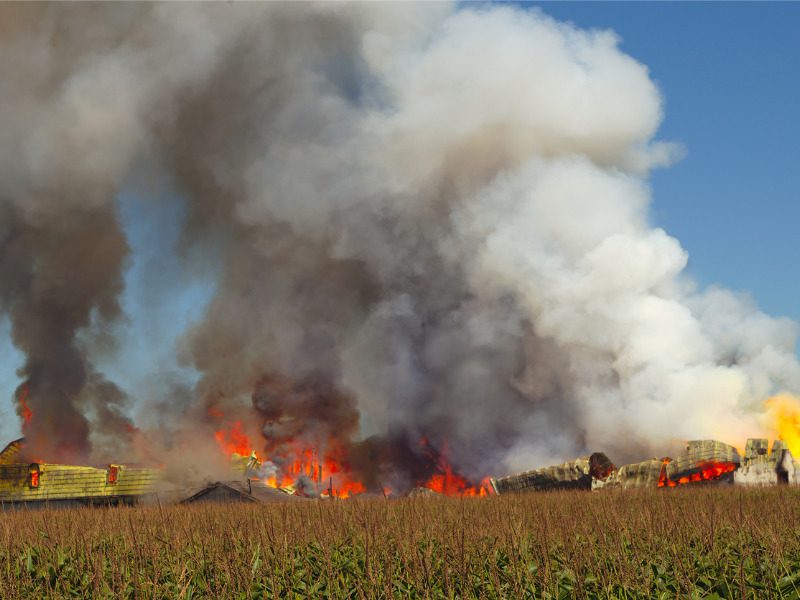How is farm fire severity trending?

As Canadian farms increase in size, so too does the severity of fire losses in the agricultural sector, a farm insurance expert told Canadian Underwriter.
In general, the number of farms in Canada is dropping, but they’re getting much larger. So, severity of losses increases just by the nature of the increased values and size of farms, said Ken Worsley, chief operating officer at Jarvis, Ont.-based Nova Mutual Insurance Company.
“It’s not uncommon to have in a dairy barn, with the cows, the barn and milking equipment, the feed equipment and the business insurance all encapsulated there…upwards of $10 million in value,” Worsley said in an interview. “And it will all be consumed [in a fire] usually.
“There are very few partial losses.”
And with potentially no size restrictions on certain agricultural buildings in Canada, as per the National Building Code of Canada, “the problem around severity isn’t going to go away, it’s going to actually get worse,” Worsley suggested.
“With [potentially] no size limitations on agricultural buildings, insurance carriers will need to be able to obtain and deploy more capacity on these risks as the total insured values are significant and reinsurance may not be able to supply all that is required.”
CU asked Worsley about whether the frequency of barn fires was down but the severity was up per incident. Such was the case in Ontario a few years ago when statistics showed there were 180 barn fires in 2008, which dropped to just over 140 in 2017.
Recently, there has also been a ‘frequency of severity’ of losses, Worsley added.
Severity tends to be cyclical based on the segment. For example, in one particular year, severity could be up for the dairy sector, while the next year may involve poultry, then hogs, then cash crops, etc.
In general, farmers’ profit margins tend to be pretty tight. Hog farmers in particular are contingent on feed prices.
“So, if feed prices are high, the hog farmers aren’t going to make any money,” Worsley said. “They won’t have the money to invest in maintenance in the barns and that creates problems from fires…
iStock.com/SashaFoxWalters
“And we already have [only] a few carriers writing agricultural insurance. As a broker, you cannot lose access to that capacity, otherwise, you’ve got nowhere to go.”
As for current trends related to barn fires, Worsley reported an uptick in hay fires from spontaneous combustion. This occurs when hay is baled with a higher moisture content than wanted.
“That’s when you see these big hay fires,” he said at the beginning of August. “There was one a few weeks ago — two-and-a-half, $3 million worth.”
Although it may seem counter-intuitive that moisture content would create a combustion or fire risk, this occurs when hay bales are wound tight, creating heat through an exothermic reaction.
“If the heat can’t dissipate out, it just keeps building up until it reaches the ignition temperature of the hay or straw,” Worsley explained. “What happens is it starts to smolder and burn, and starts to consume itself.
“Then once you start pulling it apart to try to put the fire out, oxygen gets in and actually makes it worse.”
And, because of the dry conditions, fields can catch on fire due to sparks from things like machinery and cigarette butts thrown from cars. “You’re seeing more of that,” Worsley said. “I think you also see confined livestock, so dairy, poultry and hog risks.”
In total loss situations (as is often the case), it can be difficult to find causation. Sometimes the cause can be attributed to farm machinery that’s parked inside or adjacent to a farm building that catches fire, or newer farm machinery that operates hotter.
“It ends up being usually ‘electrical undetermined,’ unless they find specifics,” Worsley said. “What we see in the farm industry is these fires are usually electrical nature in origin.”
Feature image by iStock.com/jacquesdurocher



